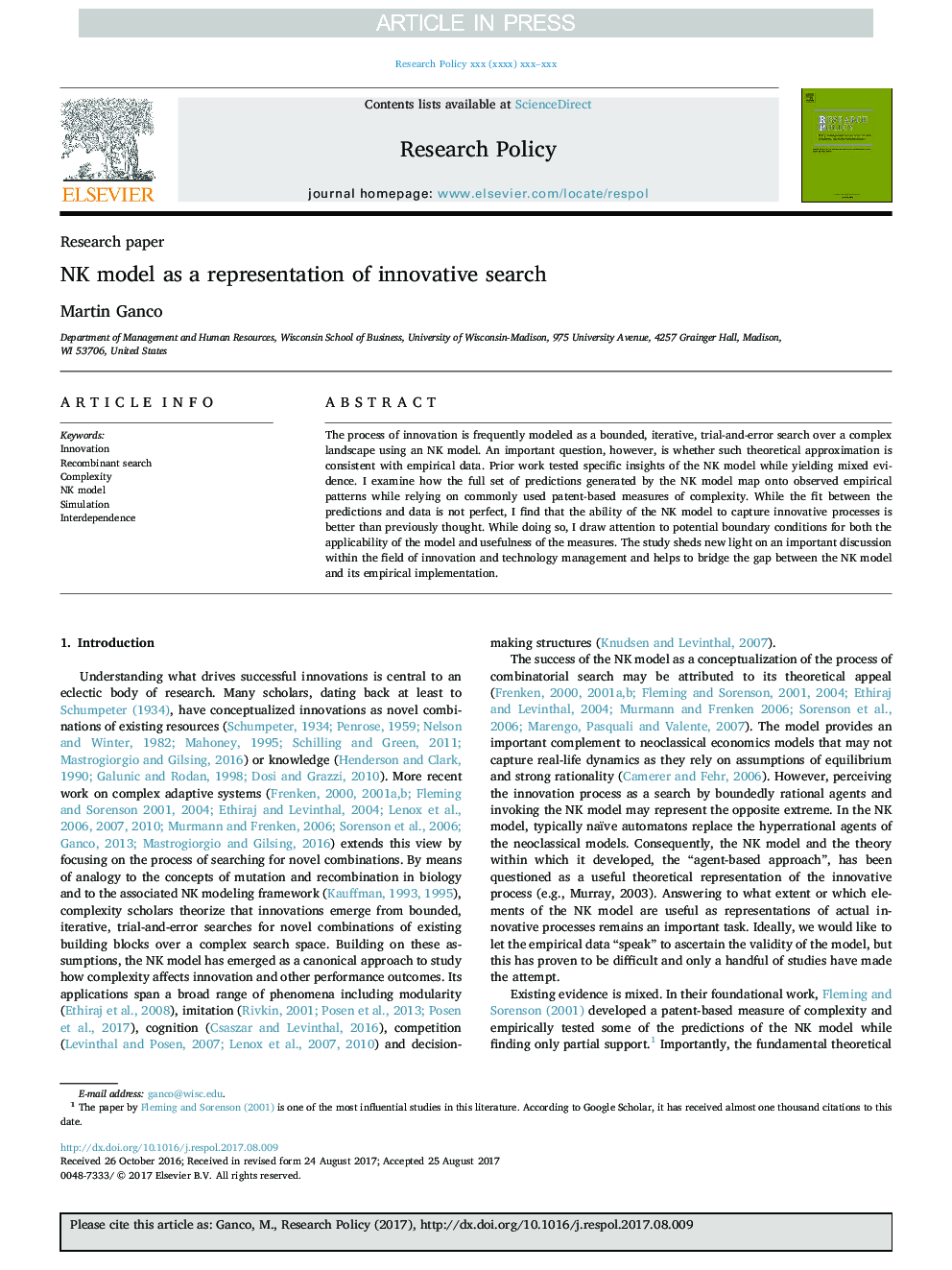| Article ID | Journal | Published Year | Pages | File Type |
|---|---|---|---|---|
| 5103825 | Research Policy | 2017 | 18 Pages |
Abstract
The process of innovation is frequently modeled as a bounded, iterative, trial-and-error search over a complex landscape using an NK model. An important question, however, is whether such theoretical approximation is consistent with empirical data. Prior work tested specific insights of the NK model while yielding mixed evidence. I examine how the full set of predictions generated by the NK model map onto observed empirical patterns while relying on commonly used patent-based measures of complexity. While the fit between the predictions and data is not perfect, I find that the ability of the NK model to capture innovative processes is better than previously thought. While doing so, I draw attention to potential boundary conditions for both the applicability of the model and usefulness of the measures. The study sheds new light on an important discussion within the field of innovation and technology management and helps to bridge the gap between the NK model and its empirical implementation.
Related Topics
Social Sciences and Humanities
Business, Management and Accounting
Business and International Management
Authors
Martin Ganco,
